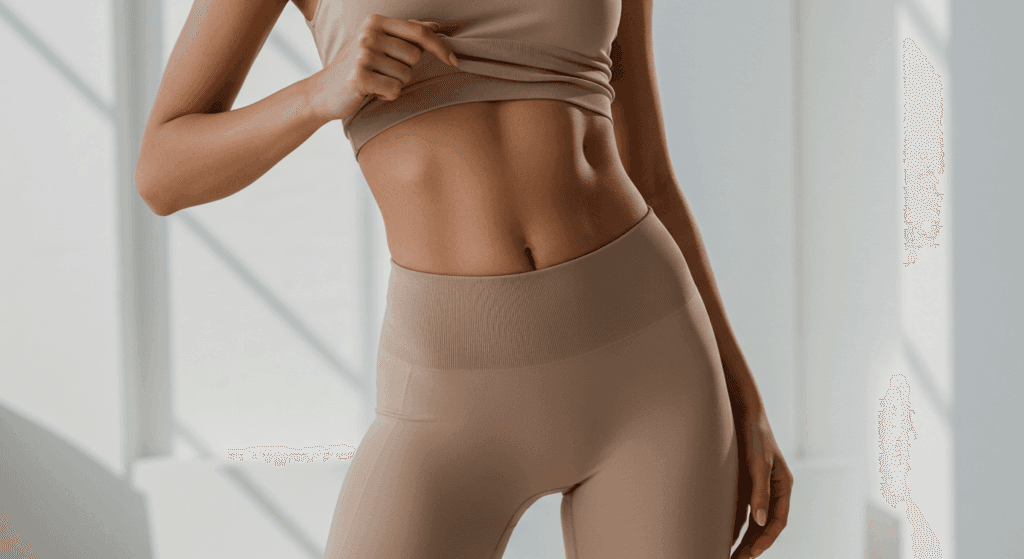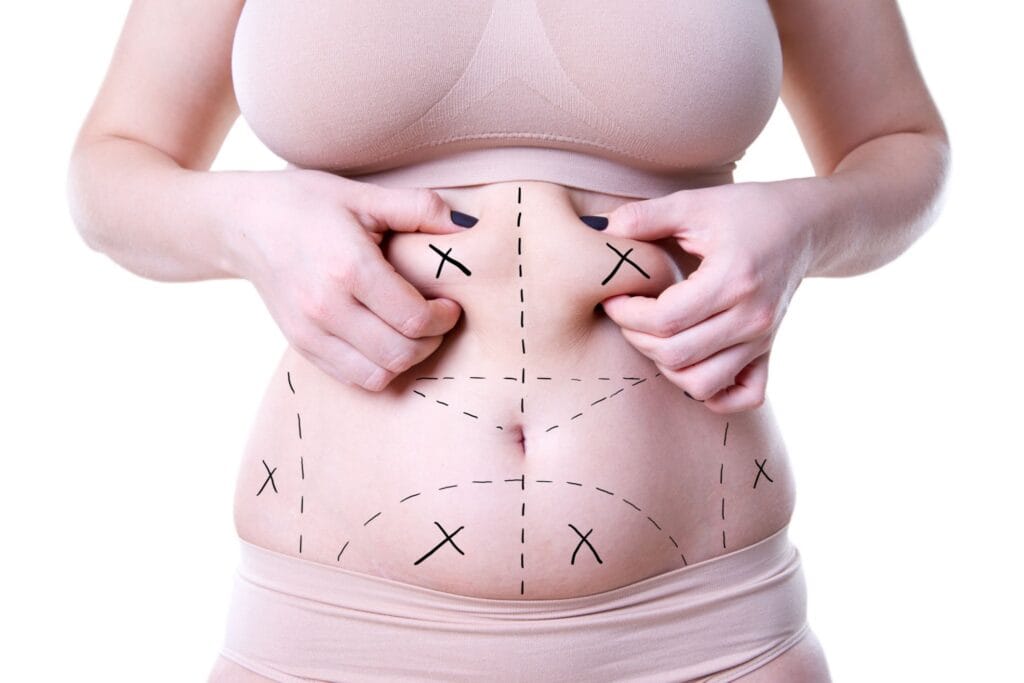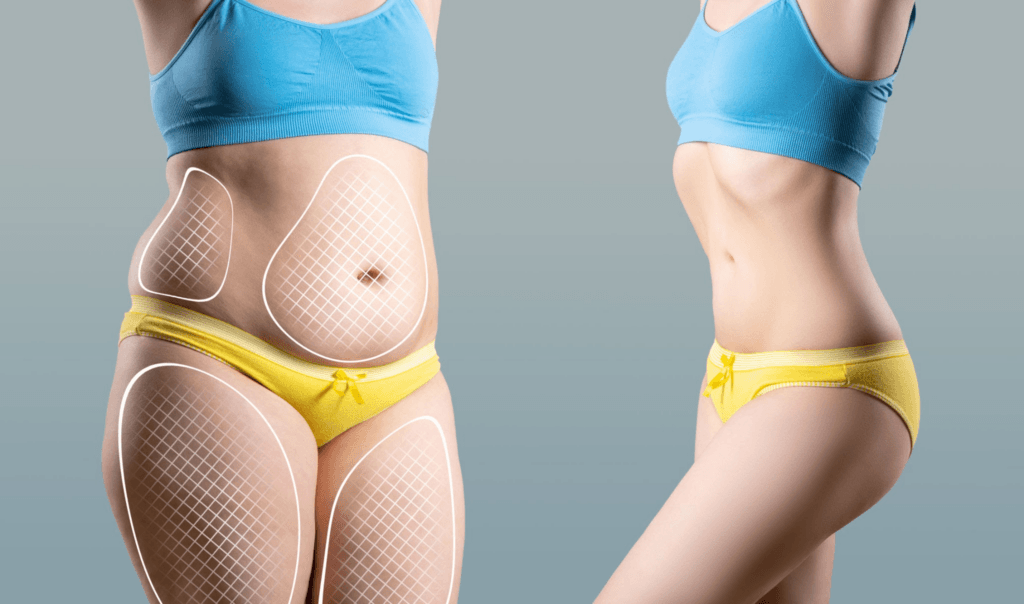Embarking on a journey to reshape your body often leads to exploring various cosmetic procedures. Among the most popular and effective is liposuction, a procedure designed to remove stubborn fat deposits that resist diet and exercise. Its enduring appeal lies in its ability to sculpt and contour the body, offering a more defined silhouette. With advancements in medical technology, liposuction has evolved significantly, offering a diverse array of techniques tailored to individual needs and desired outcomes. This comprehensive guide aims to demystify the world of liposuction, providing a detailed overview of the different types available. Our goal is to equip you with the knowledge necessary to understand your options and, ultimately, make an informed decision about which technique might be right for you.

Sommario
Capire la liposuzione
Before delving into the specifics of various liposuction techniques, it’s crucial to grasp the fundamental concept of the procedure itself.
Che cos'è la liposuzione?
Liposuction is a surgical cosmetic procedure that removes excess fat from specific areas of the body, such as the abdomen, hips, thighs, buttocks, arms, or neck. It is not a weight-loss solution but rather a body-contouring technique used to address localized fat pockets that are disproportionate to the rest of the body. The procedure typically involves making small incisions in the skin, through which a thin, hollow tube called a cannula is inserted. The cannula is then moved back and forth to loosen the fat cells, which are subsequently suctioned out of the body using a vacuum pump or a large syringe. The primary goal of liposuction is to improve body shape and proportion, creating a smoother, more aesthetically pleasing contour.
History and Evolution of Liposuction
The concept of fat removal dates back to the early 20th century, but what we recognize as modern liposuction began in the 1970s. French surgeons Arpad and Giorgio Fischer are credited with developing the blunt cannula technique in 1974, marking a significant milestone. However, it was Dr. Yves-Gérard Illouz who truly popularized the procedure in the early 1980s, introducing the “wet technique” which involved injecting saline solution into the fat before suctioning, making the process safer and more efficient. Since then, liposuction has undergone continuous refinement, with the introduction of power-assisted, ultrasound-assisted, and laser-assisted methods, among others. These advancements have made the procedure safer, more precise, and capable of addressing a wider range of body sculpting needs, minimizing recovery times and improving patient outcomes.
Benefits and Risks of Liposuction
Like any surgical procedure, liposuction offers significant benefits but also carries certain risks that patients should be aware of.
Vantaggi:
- Improved Body Contour: Effectively removes stubborn fat pockets that are resistant to diet and exercise, leading to a more sculpted physique.
- Enhanced Self-Confidence: Many patients experience a boost in self-esteem and body image after achieving their desired contours.
- Long-Lasting Results: Once fat cells are removed, they do not grow back. If a patient maintains a stable weight, the results can be permanent.
- Targeted Fat Reduction: Allows for precise removal of fat from specific problem areas.
Rischi:
- Gonfiore e lividi: Common side effects that typically subside within weeks.
- Intorpidimento: Temporary or, in rare cases, permanent changes in skin sensation.
- Infezione: A risk with any surgical procedure, though rare with proper sterile techniques.
- Fluid Accumulation (Seroma): Pockets of fluid can form under the skin and may require drainage.
- Contour Irregularities: Uneven fat removal can lead to wavy or bumpy skin.
- Allergic Reactions: To medications or materials used during the procedure.
- Reazione avversa all'anestesia: Risks associated with general anesthesia.
- Fat Embolism: A very rare but serious complication where fat particles enter the bloodstream.
It is crucial to have a thorough discussion with a qualified surgeon to understand these risks in detail and determine if liposuction is the right choice for your individual health profile.

Types of Liposuction Techniques
The evolution of liposuction has led to a variety of techniques, each with its unique approach to fat removal. Understanding these distinctions is key to identifying the most suitable option for your goals.
Traditional Liposuction
Traditional liposuction, often referred to as tumescent liposuction, is the foundational method from which most other techniques have evolved. It involves the injection of a large volume of tumescent solution—a mixture of saline solution, lidocaine (a local anesthetic), and epinephrine (a vasoconstrictor)—into the fatty areas before fat removal. The saline helps to swell and firm the fat, making it easier to remove, while the lidocaine numbs the area, and epinephrine constricts blood vessels, reducing bleeding and bruising. After the solution is injected, a small incision is made, and a cannula is inserted to manually suction out the loosened fat cells. This method is highly effective for removing significant volumes of fat and is often preferred for larger treatment areas.
Suction-Assisted Liposuction (SAL)
Suction-Assisted Liposuction (SAL) is the most common form of traditional liposuction, where a vacuum pump or a large syringe is used to create suction, pulling the fat out through the cannula. The process begins with the infiltration of the tumescent solution. Once the fat is loosened and the area is numbed, the surgeon manually manipulates the cannula back and forth within the fatty layer to break up the fat cells. The dislodged fat is then suctioned out. SAL is highly effective and allows for precise contouring. Its benefits include its widespread use and proven track record. However, it can be physically demanding for the surgeon, which might indirectly influence the smoothness of the result, and it may lead to more bruising and swelling compared to some newer techniques due to the manual force involved.
Power-Assisted Liposuction (PAL)
Power-Assisted Liposuction (PAL) is an advancement of SAL that utilizes a specialized cannula with a vibrating tip. This rapidly vibrating or oscillating cannula (up to 5,000 times per minute) mechanically breaks down fat cells more efficiently than manual manipulation. The surgeon still guides the cannula, but the motorized assistance reduces the physical effort required, allowing for more precise and less strenuous fat removal. The primary advantages of PAL include faster fat removal, particularly in fibrous areas or for large volumes of fat, and potentially less trauma to the surrounding tissues, which can lead to reduced bruising and a smoother recovery. This technique is often favored for secondary liposuction procedures or for patients with dense fat.
Advanced Liposuction Techniques
Beyond traditional and mechanically assisted methods, several advanced liposuction techniques leverage different forms of energy to facilitate fat removal, offering enhanced precision, skin tightening benefits, and often quicker recovery times. These innovations represent the forefront of liposculpting technology, providing surgeons with more tools to achieve optimal aesthetic results while minimizing invasiveness.
Ultrasound-Assisted Liposuction (UAL)
Ultrasound-Assisted Liposuction (UAL) employs ultrasonic energy to liquefy fat cells before they are suctioned out. During the procedure, a special cannula that emits high-frequency sound waves is inserted under the skin. These sound waves rupture the walls of the fat cells, turning the fat into an emulsion (a liquid form). This emulsified fat is then removed using a traditional suction cannula. UAL is particularly beneficial for treating larger volumes of fat, fibrous areas (like the back or male breasts), and for secondary procedures where scar tissue might be present. A key advantage of UAL is its ability to precisely target fat cells while sparing surrounding tissues like blood vessels and nerves. It can also lead to some degree of skin tightening due to the heat generated, contributing to a smoother post-procedure contour.
Laser-Assisted Liposuction (LAL)
Laser-Assisted Liposuction (LAL), often marketed under brand names like SmartLipo or SlimLipo, uses laser energy to liquefy fat cells. A tiny fiber optic cable is threaded through a small cannula and inserted into the fatty tissue. The laser emits energy that heats and ruptures the fat cells, turning them into an oily liquid that is then gently suctioned out or metabolized by the body. A significant advantage of LAL is its dual action: in addition to fat removal, the heat generated by the laser stimulates collagen production, leading to noticeable skin tightening in the treated area. This makes LAL an excellent choice for areas where skin laxity is a concern, such as the neck, arms, or abdomen. It is generally less invasive than traditional liposuction, often requiring only local anesthesia and resulting in quicker recovery times with less bruising and swelling.
Radiofrequency-Assisted Liposuction (RFAL)
Radiofrequency-Assisted Liposuction (RFAL), known by brands such as BodyTite, utilizes radiofrequency energy to melt fat and simultaneously tighten the skin. This technique involves an internal electrode that delivers radiofrequency energy directly into the fatty tissue, heating it to a precise temperature. An external electrode monitors the skin’s surface temperature, ensuring safety and optimal heating. The controlled heating liquefies the fat cells, which are then gently suctioned out. Similar to LAL, the heat generated by RFAL stimulates collagen and elastin production, leading to significant skin contraction and tightening. RFAL is particularly effective for larger areas of fat removal with moderate skin laxity and can provide impressive contouring results with minimal invasiveness and downtime. It is a highly precise method that allows for consistent results and excellent thermal control.
Non-Surgical Liposuction Alternatives
For individuals who prefer to avoid surgery or have smaller pockets of fat, a range of non-surgical alternatives offer fat reduction without incisions, anesthesia, or significant downtime. These methods typically work by destroying fat cells through various means, which are then naturally processed and eliminated by the body.
Cryolipolysis (CoolSculpting)
Cryolipolysis, most famously known by the brand name CoolSculpting, is a non-invasive procedure that uses controlled cooling to freeze and eliminate stubborn fat. During a Cryolipolysis session, a specialized applicator is placed on the target area, which then draws the fat bulge between two cooling panels. The fat cells are cooled to a temperature that causes them to crystallize and die, without damaging the surrounding skin or tissues. Over the following weeks and months, the body naturally processes and eliminates these dead fat cells. Cryolipolysis is ideal for smaller, localized fat pockets in areas like the abdomen, flanks (“love handles”), thighs, and chin. It is a popular choice due to its non-invasive nature, lack of downtime, and gradual, natural-looking results, although multiple sessions may be required for optimal outcomes.
Injection Lipolysis (Kybella)
Injection Lipolysis involves injecting a substance directly into the fatty tissue to dissolve fat cells. The most prominent example is Kybella (deoxycholic acid), an injectable drug specifically approved for treating submental fullness, commonly known as a “double chin.” Deoxycholic acid is a naturally occurring molecule in the body that aids in the breakdown and absorption of dietary fat. When injected into the fat beneath the chin, it destroys fat cells, which are then naturally cleared away by the body’s metabolic processes. Multiple treatment sessions, typically spaced several weeks apart, are usually necessary to achieve the desired reduction. While effective for localized fat, particularly under the chin, Injection Lipolysis is not intended for large-volume fat removal or widespread body contouring.
Scegliere la giusta tecnica di liposuzione
With such a diverse array of liposuction techniques available, selecting the most appropriate one can seem daunting. The best approach involves a careful consideration of individual factors and, crucially, a detailed consultation with a qualified professional.
Factors to Consider
Several key factors play a pivotal role in determining the most suitable liposuction technique for an individual. These include the amount and location of fat to be removed, the patient’s skin elasticity, overall health status, desired outcomes, and willingness for downtime. The surgeon will assess these elements to recommend a technique that aligns best with the patient’s anatomy and aesthetic goals. It’s not a one-size-fits-all solution; what works optimally for one person may not be the best choice for another.
Body Type and Goals
A patient’s unique body type and specific aesthetic goals significantly influence the choice of liposuction technique. For instance, individuals with good skin elasticity are generally better candidates for traditional or power-assisted liposuction, as their skin will retract well after fat removal. Those with mild to moderate skin laxity, or those seeking an added skin-tightening benefit, might be better suited for laser-assisted (LAL) or radiofrequency-assisted (RFAL) liposuction. If the goal is to remove large volumes of fat, traditional or ultrasound-assisted (UAL) methods might be more effective. For very small, localized fat pockets or for those averse to surgery, non-surgical options like Cryolipolysis or Injection Lipolysis could be considered. Clearly articulating your body concerns and desired results during consultation is essential.
Recovery Time and Downtime
The varying nature of liposuction techniques means that recovery times and associated downtime can differ significantly. Generally, traditional liposuction and UAL may involve a slightly longer recovery period, with patients typically needing 1-2 weeks off work and avoiding strenuous activities for 4-6 weeks. Bruising and swelling are more pronounced initially. Minimally invasive techniques like LAL and RFAL often boast quicker recovery, with many patients returning to light activities within a few days and more strenuous exercise within 2-4 weeks, benefiting from less bruising and faster resolution of swelling due to less tissue trauma and integrated skin tightening. Non-surgical options like Cryolipolysis and Injection Lipolysis have virtually no downtime, allowing patients to resume normal activities immediately, though results appear gradually over weeks to months. Understanding these differences is vital for planning your procedure and post-treatment schedule.
Cost and Affordability
The cost of liposuction varies widely depending on several factors, including the type of technique used, the extent of the area being treated, the geographical location of the clinic, the surgeon’s fees, anesthesia fees, and facility costs. Traditional liposuction can sometimes be more cost-effective for larger areas, while advanced energy-assisted techniques (UAL, LAL, RFAL) may incur higher costs due to specialized equipment. Non-surgical alternatives often have lower per-session costs but may require multiple sessions to achieve desired results, potentially making their overall cost comparable or even higher for similar fat reduction. It’s important to obtain a detailed breakdown of all costs during your consultation and inquire about financing options if needed. Remember that choosing a qualified and experienced surgeon is paramount, and selecting a procedure based solely on cost is not advisable.
Consulting with a Professional
The single most important step in choosing the right liposuction technique is to consult with a board-certified plastic surgeon or a qualified medical professional specializing in body contouring. An experienced surgeon will conduct a thorough physical examination, assess your medical history, discuss your aesthetic goals, and evaluate the quality of your skin and fat deposits. They will explain the various techniques in detail, outlining the pros and cons of each as they relate to your specific case. This consultation is your opportunity to ask all questions, voice concerns, and gain a clear understanding of the recommended procedure, expected results, and potential risks. Do not rush this process; an informed decision made in collaboration with an expert is key to a successful outcome.
What to Expect During a Consultation
During a typical liposuction consultation, you can expect a comprehensive and personalized discussion. The surgeon will begin by reviewing your medical history, including any past surgeries, current medications, and allergies, to ensure you are a suitable candidate for the procedure. You will then have the opportunity to articulate your body concerns and aesthetic aspirations in detail. The surgeon will perform a physical examination of the areas you wish to treat, assessing skin elasticity, fat distribution, and overall body proportion. Based on this assessment and your goals, they will explain which liposuction techniques are most appropriate for you, detailing the procedure steps, anesthesia options, potential risks, and expected recovery process. Before-and-after photos of previous patients may be shared to illustrate potential results. You should feel encouraged to ask any questions you have about the procedure, costs, recovery, and long-term outlook. A good consultation will be educational, transparent, and leave you feeling informed and confident about your next steps.
Conclusione
Navigating the landscape of body contouring procedures reveals that liposuction, in its various forms, remains a highly effective solution for targeted fat removal and body sculpting. From the foundational approach of traditional liposuction to the cutting-edge precision of energy-assisted techniques like UAL, LAL, and RFAL, and even non-surgical alternatives like Cryolipolysis and Injection Lipolysis, the options are more diverse and refined than ever before. Each method offers distinct advantages, catering to different body types, fat reduction needs, and patient preferences regarding invasiveness and recovery.
The key to achieving satisfactory and safe results lies in a thorough understanding of these differences and, critically, in making an informed decision in partnership with a highly qualified professional. Factors such as your specific body goals, the amount and location of fat, skin elasticity, desired recovery time, and budget all play a significant role in determining the most appropriate technique for you. Liposuction is not a substitute for weight loss but rather a powerful tool for refining your physique and enhancing your natural contours.
Key Takeaways:
- Liposuction encompasses a range of techniques, from traditional suction-assisted methods to advanced energy-assisted (ultrasound, laser, radiofrequency) and non-surgical alternatives (Cryolipolysis, Injection Lipolysis).
- Each technique has specific benefits regarding fat removal efficiency, skin tightening capabilities, invasiveness, and recovery time.
- Choosing the right technique depends on individual factors like body type, aesthetic goals, skin elasticity, and willingness for downtime.
- A comprehensive consultation with a board-certified plastic surgeon is paramount to assess suitability, discuss options, understand risks, and set realistic expectations.
Domande frequenti
What is the most common type of liposuction?
Suction-Assisted Liposuction (SAL), particularly when combined with the tumescent technique, remains the most common and widely performed type of liposuction. Its popularity stems from its proven effectiveness, versatility in treating various body areas, and the ability to remove significant volumes of fat. While newer energy-assisted techniques offer specific advantages like skin tightening, SAL serves as the foundational method and is often used in conjunction with or as the primary step for fat removal in many procedures.
How long does it take to recover from liposuction?
Recovery time from liposuction varies significantly depending on the type of technique used, the extent of the areas treated, and individual healing capabilities. Generally:
- Traditional/SAL/UAL: Initial recovery with swelling and bruising can last 1-2 weeks. Most patients can return to light work within a week and resume strenuous activities in 4-6 weeks.
- LAL/RFAL: Often have quicker recovery due to less invasiveness. Patients may return to light activities in a few days and strenuous exercise in 2-4 weeks.
- Non-Surgical (Cryolipolysis, Injection Lipolysis): Typically no downtime. Patients can resume normal activities immediately, though results appear gradually over several weeks to months.
Wearing a compression garment for several weeks post-procedure is usually recommended to help reduce swelling and aid in skin retraction.
Are the results of liposuction permanent?
Yes, the results of liposuction are generally considered permanent because the fat cells that are removed during the procedure do not grow back. Once these fat cells are gone, they are gone for good. However, it’s crucial to understand that while the treated areas will maintain their new contour, the remaining fat cells in other parts of your body can still enlarge if you gain weight. Therefore, maintaining a stable weight through a healthy diet and regular exercise is essential to preserve the long-term results of liposuction. Significant weight gain after liposuction can diminish the aesthetic outcome.
What are the potential risks and complications of liposuction?
While generally safe when performed by a qualified surgeon, liposuction carries potential risks and complications. These include common post-operative issues like swelling, bruising, and temporary numbness. More serious, though rare, complications can include infection, fluid accumulation (seroma), contour irregularities or uneven results, skin discoloration, allergic reactions to anesthesia or medications, and in very rare cases, fat embolism or blood clots. Choosing a board-certified plastic surgeon, adhering to pre- and post-operative instructions, and disclosing your full medical history can significantly minimize these risks.
Can liposuction be used for weight loss?
No, liposuction is not a primary method for weight loss. It is a body contouring procedure designed to remove localized pockets of stubborn fat that are resistant to diet and exercise, thereby improving body shape and proportion. It is most effective for individuals who are at or close to their ideal body weight but have specific areas of disproportionate fat accumulation. Patients seeking significant weight reduction should explore other avenues such as diet, exercise, or bariatric surgery, as liposuction is not intended to treat obesity.
How much does liposuction typically cost?
The cost of liposuction varies widely, typically ranging from a few thousand to over ten thousand dollars, depending on several factors. These include the number and size of the areas being treated, the specific liposuction technique used (e.g., traditional, laser-assisted, radiofrequency-assisted), the surgeon’s fees (which vary based on experience and reputation), anesthesia fees, facility fees, and pre- and post-operative care. Geographical location also plays a role in pricing. Since liposuction is considered a cosmetic procedure, it is generally not covered by insurance. Patients should get a detailed quote during their consultation and discuss all potential costs involved.
Our Surgeons and Affiliated Professionals
At Surgyteam, we are proud to collaborate with a distinguished team of medical professionals, each bringing a wealth of expertise and a commitment to patient-centered care.
- Dr. Mehmet Fatih Okyay (Dr. MFO): Plastic, Reconstructive and Aesthetic Surgery Specialist. Co-founder of Surgyteam. FEBOPRAS certified. (https://www.dr-mfo.com/)
- Dr. Selçuk Yılmaz: Plastic, Reconstructive and Aesthetic Surgery Specialist. (https://drselcukyilmaz.com)
- Dr. Ebru Okyay: Dermatology Specialist. (https://drebruokyay.com/)
- Dr. Mustafa Keleş: Aesthetic, Plastic and Reconstructive Surgery Specialist. (https://www.medstar.com.tr/doktorlar/mustafa-keles/)
- Dr. Boray Yücel: Plastic, Reconstructive and Aesthetic Surgery Specialist. (https://borayucel.com/)
- Dr. Sibel Atalay: Plastic, Reconstructive and Aesthetic Surgery Specialist. Clinic with International Health Tourism Authorization Certificate. (https://www.sibelatalay.com.tr/)
- Dr. Mert Meral: Plastic, Reconstructive and Aesthetic Surgery Specialist. EBOPRAS certified. (https://mertmeral.com/)
To learn more about Surgyteam and how we can assist you, please visit our website:
https://surgyteam.com/
Disclaimer: This blog post is intended for informational purposes only and does not constitute medical advice. Costs are estimates and can vary. Always consult with a qualified medical professional for personalized advice and treatment.



